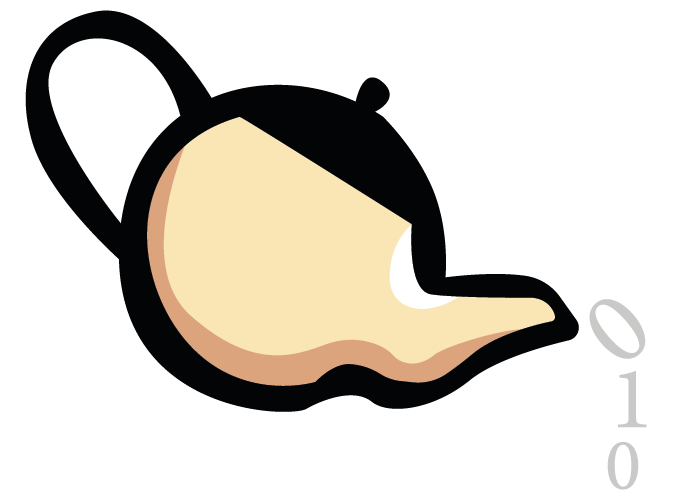The evils of the dashboard merry-go-round
What is the first thing you do when you get to the office? Check your email probably. Then what? I bet you go through the same routine of checking your dashboards to see what’s happened overnight.
That is exactly what I do every single morning at work.
And I keep checking those dashboards throughout the day. Sometimes I manage to get myself in a loop, continuing around and around the same set of dashboards.
I can pretty much guarantee that nothing will have changed significantly. Certainly not to the point where some action is necessary.
How many times do you check some dashboard and then action something? Me? Very rarely, if ever.
The Problem
I call this obsessive need to view all of my various dashboards my dashboard merry-go-round.
The merry-go-round is particularly a problem with real time stats. When Google Analytics implemented real time stats I guarantee that webmaster productivity plummeted the very next day.
But the merry-go-round is not confined to Google Analytics or even website statistics. Any kind of statistics will do.
It is a miracle I manage to do any work. One of the most seductive things about the constant dashboard merry-go-round is that it feels like work. There you are frantically pounding away quickly moving between your various dashboards. It even looks to everybody else like work. Your boss probably thinks you’re being really productive.
The problem is that there is no action. There is no end result.
You log into Google Analytics, go to the “Real-Time” section, you discover that there are five people browsing your site. On pages X, Y, and Z.
So what. You are not getting any actionable information from this.
You then go to the other three sites you’ve got in Google Analytics. Rince and reapeat.
Solutions
The obvious solution is to just stop. But if it was as simple as that, you’d already have stopped and so would I.
Notifications
One of the things you are trying to do by going into your dashboards is to see what’s changed. Has anything interesting happened? One way you can short circuit this is to configure the dashboard to tell you when something interesting has happened.
I use the Pingdom service to monitor company websites and I almost never go into the Pingdom dashboard. Why? Because I’ve configured the service to send me a text message to my mobile whenever a website goes down. If I don’t receive a text, then there’s no need to look at the dashboard.
Notifications do come with a pretty big caveat: you must trust your notifications. If I can’t rely on Pingdom to tell me when my sites are down, I may be tempted to go dashboard hunting.
Even if your systems are only capable of sending email alerts, you can still turn those into mobile friendly notifications and even phone call alerts using services like PagerDuty, OpsGenie and Victorops.
Instead of needing a mobile phone app for each service you run, you can merge all of your alerts into a single app with mobile notifications.
If you haven’t received a notification, then you don’t need to go anywhere near the dashboard. Every time you think about going there just remind yourself that, if there was a problem, you’d already know about it.
Time Management Techniques
Pomodoro Technique or Timeboxing or … lots of other similar techniques.
None of the time management techniques will of themselves cure your statsitus, it just moves it into your own “pomodori”, or, the time in between your productive tasks. If you want to sacrifice your own leisure time to stats, then go nuts. But at least you’re getting work done in the mean time.
The Writers’ Den
One technique writers use to be more productive is the writer’s den. The idea is you set aside a space with as few distractions as possible, including a PC with just the software you need to work and that isn’t connected to the internet.
Not a bad idea, but unfortunately, a lot of us can’t simply switch the internet off. We either work directly with internet connected applications or we need to use reference materials only available on the web.
As ever, there are software solutions that can restrict access to sites at pre-defined times of the day. You could permit yourself free access for the first half hour of work, and then again just before you leave. Leaving a large chunk of your day for productive work.
The drawback with systems that restrict access is that, as you are likely to be the person setting up the system, you’re also likely to be able to circumvent it quite easily too.
Conclusion
For me, dashboards and stats can be both a boon and a curse at the same time. They can hint at problems and actions you need to take, but they can also suck an awful lot of time out of your day.
I’ve found that a combination of time management and really good notifications are a great way to stop the dashboard merry-go-round and put stats into their rightful place. A tool to help you improve, not an end in themselves.
The problem with concentrating too much on statistics is that it is so seductive. It feels like you are working hard but, in the end, if there are no actions coming out of the constant stats watching, then it is all wasted effort.
If you have any hints and tips how you overcame your dashboard merry-go-round, please leave a comment. 😄
[Picture is of a French old-fashioned style carousel with stairs in La Rochelle by Jebulon (Own work) [GFDL (http://www.gnu.org/copyleft/fdl.html) or CC BY-SA 3.0 (http://creativecommons.org/licenses/by-sa/3.0)], via Wikimedia Commons]

